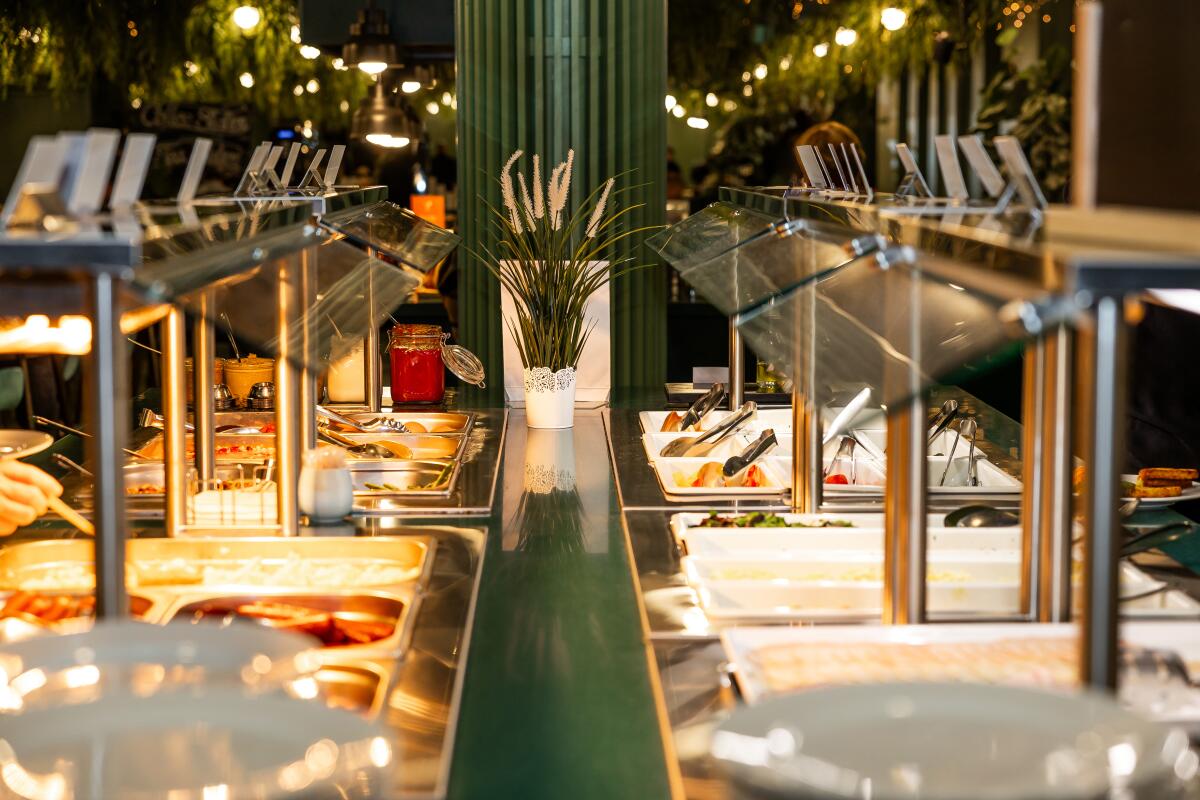
(Getty Images)
The idea of erecting a pane of clear glass or plastic between open trays of food and self-serving diners, aka “a sneeze guard,” dates back to at least the early 1950s, albeit to mixed reactions. The first patented sneeze guard debuted in 1959 and, in the 1960s, the FDA began mandating their use around the launch of the self-serve salad bar.
Do the guards work? Well, sort of, which is why they remain mandatory for buffets and salad bars. For expectorating adults looking down, a guard may block big droplets but work less well for shorter persons, like children. Germs can also come via dirty plates and utensils or foods not kept sufficiently chilled.
During the COVID pandemic, when the world became a giant salad bar with translucent shields popping up everywhere, efficacy studies found the guards more often produced a sense of false security.
Blame it on the microbial nature of the virus. The guards did not stop the flow of tiny aerosol particles, but rather impeded normal air flow and ventilation and, worse, sometimes redirected airborne germs to adjacent persons.
